NEW AEROSPACE VIBRATION AND ACOUSTICS LAB OPENS DOORS TO ADVANCED RESEARCH
Hampton, Va. – On Thursday April 12, local, regional, and commonwealth officials joined researchers, engineers, and students at a dedication ceremony celebrating the new National Institute of Aerospace Research and Innovation Laboratories at 1100 Exploration Way, in Hampton, Virginia. The 58,000 square-foot building is owned by Virginia Tech and overseen by the institute, who holds a long-term lease on the property.
As part of the facilities within the NIA Labs, the Bruel & Kaejer Laboratory for Aerospace Vibration and Acoustics is directed by Virginia Tech’s Samuel Langley Distinguished Professor of Engineering, Christopher R. Fuller. Fuller is an expert in acoustics and noise and vibration control and is noted for his distinguished work on control of the interior noise and vibration in aerospace applications, launch vehicle payload noise, and other related concerns in the automotive and marine industries.
Under a unique arrangement with NIA, the laboratory is sponsored by Bruel & Kjaer, world leaders in instrumentation and software for acoustic and vibration measurements and analysis. The laboratory contains state of the art instrumentation and equipment for measuring and analyzing vibration and sound.
“I am very pleased that a world renowned company such as Bruel & Kjaer has agreed to sponsor our laboratory” remarked Fuller. “The sponsorship and interaction with Bruel & Kjaer will undoubtedly lead to a significant increase in the quality and reputation of the work and education performed in our laboratory.”
Bill Wright, Bruel & Kjaer Application Engineer for the Mid Atlantic Region added, “Bruel & Kjaer is pleased to be helping with this partnership to ensure that NIA students can benefit from B&K’s core sound and vibration knowledge and our multiple and dedicated solutions for core markets such as aerospace, defense, electro acoustics and medical.”
The laboratory will support education in acoustics and vibration and enable advanced research on analyzing, understanding, and developing innovative solutions for noise and vibration problems in aircraft, rotorcraft, and spacecraft. Active noise control still offers much potential for the reduction of aircraft exterior noise and research in that area will be carried out in the new facility. Fuller noted, “One of NASA’s important goals is the development of environmentally friendly aircraft, and noise is a key aspect of this program. The work in this new lab will support NASA and the commercial aviation industry in developing quieter engines, airframe noise and interior noise in aircraft and rotorcraft.”
Multi-functional and advanced acoustic materials that reduce vibration and harvest energy will also be studied, as vibration control is an important consideration in designing efficient aircraft and space structures. Research conducted in the lab will help enable applications of acoustics to medicine as well.
Future directions in acoustics and vibration research to be considered in the laboratory include the investigation of meta acoustic materials which combine advances in nano and material technologies to create lightweight sound absorbing materials with increased performance. The combination of microbiology and materials may lead to genetically grown materials which have improved vibration and noise reduction qualities.

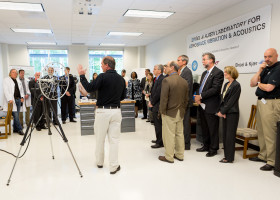
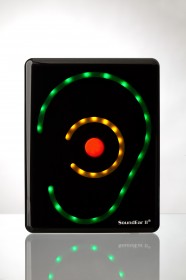
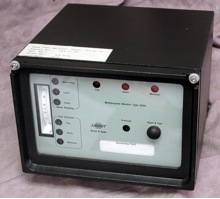
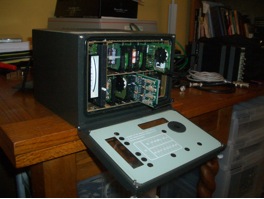
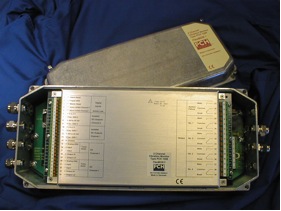 These new monitors have a PC interface for setting up the unit and displaying the results of the measurements. The programmed data is stored within the unit to enable the monitor to operate independently of the PC and retained in the case of a power failure. The DSP allows for the choice of many low pass and high pass filters as well as true RMS, Peak or Peak-to-Peak measurements. In addition, there are many built-in test functions and voltage references for checking out new test set-ups as well as system failure indicators and relays. The built-in relays are used to interface with PLC’s and other instrumentation and are triggered upon user defined threshold levels. In addition, there are electrical outputs for conditioned and unconditioned AC signals for additional spectrum analysis or waveform storage. These monitors are ideal for real time detection and control of vibration and acoustic events.
These new monitors have a PC interface for setting up the unit and displaying the results of the measurements. The programmed data is stored within the unit to enable the monitor to operate independently of the PC and retained in the case of a power failure. The DSP allows for the choice of many low pass and high pass filters as well as true RMS, Peak or Peak-to-Peak measurements. In addition, there are many built-in test functions and voltage references for checking out new test set-ups as well as system failure indicators and relays. The built-in relays are used to interface with PLC’s and other instrumentation and are triggered upon user defined threshold levels. In addition, there are electrical outputs for conditioned and unconditioned AC signals for additional spectrum analysis or waveform storage. These monitors are ideal for real time detection and control of vibration and acoustic events.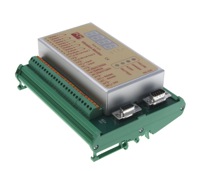
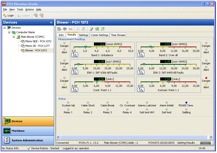 PCH Engineering has also developed a range of monitors for multichannel measurements using FFT analysis on an incoming vibration or acoustic signal. This FFT analysis can be defined by the end user to meet the particular needs of the application. The sampled time block is chosen to reflect the bandwidth of interest. Alarm limits can be set on particular bands of interest within the FFT and are user selectable. Several frequency bands can be chosen and defined by the upper and lower frequency. The resultant FFT calculations, updated for every time block, are displayed with the alarm bands highlighted while the PC is attached to the monitor for setup and testing.
PCH Engineering has also developed a range of monitors for multichannel measurements using FFT analysis on an incoming vibration or acoustic signal. This FFT analysis can be defined by the end user to meet the particular needs of the application. The sampled time block is chosen to reflect the bandwidth of interest. Alarm limits can be set on particular bands of interest within the FFT and are user selectable. Several frequency bands can be chosen and defined by the upper and lower frequency. The resultant FFT calculations, updated for every time block, are displayed with the alarm bands highlighted while the PC is attached to the monitor for setup and testing.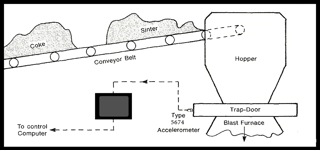 Another application was found at an oil refinery. After refinement of the oil into various gasoline products, the left over sludge is pumped into very large vessels or drums. Once there, the sludge is pressurized and heated until most hydrocarbons are extracted. The material that is left over is called Coke and has the consistency of charcoal. This leftover coke has to be flushed out of the drums with high pressure water jets so that the next batch of sludge can be pumped in. This is a twenty-four hour seven days a week operation and the faster the coke can be flushed out the faster the next batch can be processed. When the operators flush out the coke with the high pressure jets, there is a noticeable noise when the jets cut through the coke and is hitting the side of the drum. This is referred to as a clean cut and the sound is very much like the sound the spray of a garden hose on an empty metal trash can. When the jets are into the coke, or cutting the material, there is a noticeable quieting of the sound. It is important for the operators to know when there is a “clean cut” so that they do not waste time here and can maneuver the jets to a lower level to cut into the material. The operators should spend as much time as they can cutting the coke and less time at the clean cutting positions. An accelerometer mounted in an ideal location on the side of the drum is able to pick up this cutting noise when the jets are hitting the side of the drum. The monitor is able to close relays to illuminate lights to let the operator know when there is a clean cut. The light turns off when the jets are cutting into the coke material.
Another application was found at an oil refinery. After refinement of the oil into various gasoline products, the left over sludge is pumped into very large vessels or drums. Once there, the sludge is pressurized and heated until most hydrocarbons are extracted. The material that is left over is called Coke and has the consistency of charcoal. This leftover coke has to be flushed out of the drums with high pressure water jets so that the next batch of sludge can be pumped in. This is a twenty-four hour seven days a week operation and the faster the coke can be flushed out the faster the next batch can be processed. When the operators flush out the coke with the high pressure jets, there is a noticeable noise when the jets cut through the coke and is hitting the side of the drum. This is referred to as a clean cut and the sound is very much like the sound the spray of a garden hose on an empty metal trash can. When the jets are into the coke, or cutting the material, there is a noticeable quieting of the sound. It is important for the operators to know when there is a “clean cut” so that they do not waste time here and can maneuver the jets to a lower level to cut into the material. The operators should spend as much time as they can cutting the coke and less time at the clean cutting positions. An accelerometer mounted in an ideal location on the side of the drum is able to pick up this cutting noise when the jets are hitting the side of the drum. The monitor is able to close relays to illuminate lights to let the operator know when there is a clean cut. The light turns off when the jets are cutting into the coke material.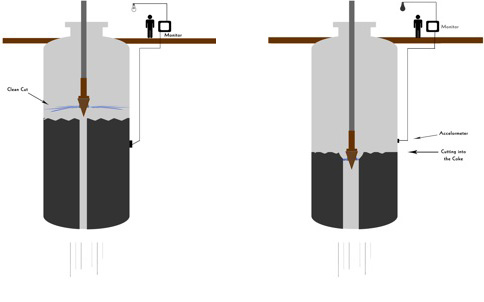 These low cost, autonomous monitors are very useful in situations where an acoustic or vibration event needs to be detected and acted upon to save time and expense. More information can be obtained at
These low cost, autonomous monitors are very useful in situations where an acoustic or vibration event needs to be detected and acted upon to save time and expense. More information can be obtained at